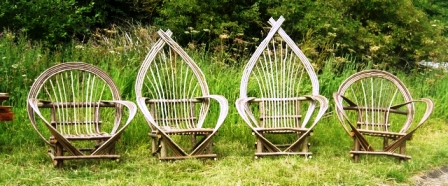Is anybody using hazel for projects? I am interested in seeing some inspiration particularly for where it is being used for its qualities, not being used for the sake of it.
We have a ready supply of coppiced wood, at least for my small number of projects. It ranges up to a couple of inches in diameter, although it could be left to grow bigger. It is currently growing, but could be cut now for use in a couple of years.
I like the idea that it is sustainable and in theory I could plant enough in my own garden to harvest in my own lifetime. In the meantime, I can grab some from my parents place.
I have seen this from Sebastian Cox which is a starting point for discussion. Traditional Hewn Trestle Table with Table Top | Sebastian Cox
We have a ready supply of coppiced wood, at least for my small number of projects. It ranges up to a couple of inches in diameter, although it could be left to grow bigger. It is currently growing, but could be cut now for use in a couple of years.
I like the idea that it is sustainable and in theory I could plant enough in my own garden to harvest in my own lifetime. In the meantime, I can grab some from my parents place.
I have seen this from Sebastian Cox which is a starting point for discussion. Traditional Hewn Trestle Table with Table Top | Sebastian Cox







